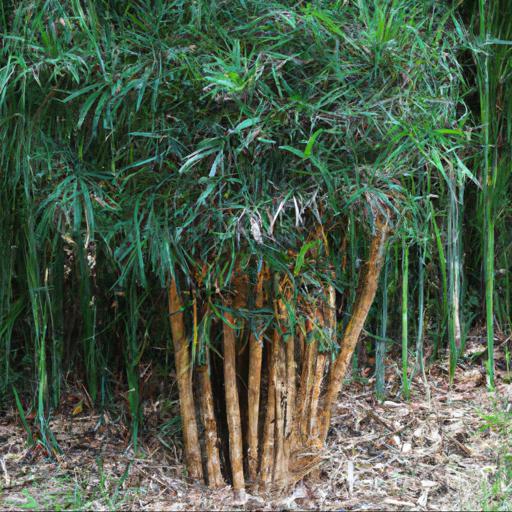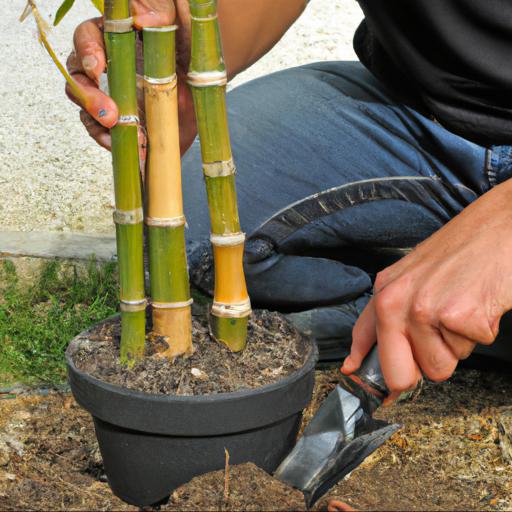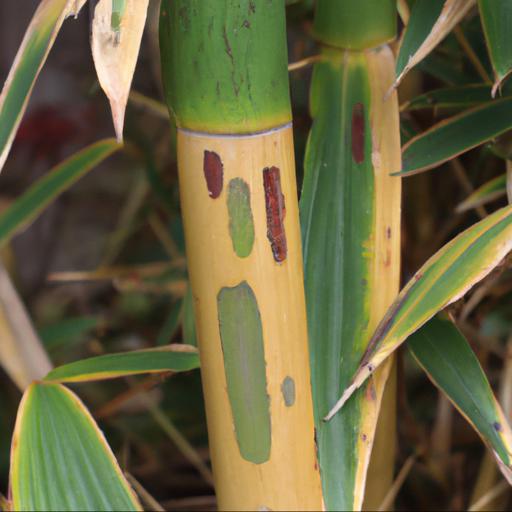Phyllostachys nigra, commonly known as the Black Bamboo, is a species of bamboo native to China. It is one of the most popular bamboos for landscaping, as it is fast-growing, hardy, and can be easily maintained.
It has a unique look, with its dark green canes and yellowish-green leaves. It is also a great choice for creating privacy screens, as it can grow to heights of up to 20 feet. Additionally, it is highly resistant to pests and diseases, making it a great choice for any garden.
With its unique look and hardiness, Phyllostachys nigra is a great choice for anyone looking to add a touch of beauty to their landscape.
Benefits of growing phyllostachys nigra

Phyllostachys nigra is an impressive species of bamboo that provides a range of excellent benefits when grown in the UK landscape. Some of the most notable advantages of this particular bamboo are its fast growth rate, ease of care and privacy-enhancing capabilities. From a visual perspective, phyllostachys nigra stands out among other bamboos due to its unique black stems with light yellow strands.
This striking colour palette creates an eye-catching contrast which is able to instantly grab attention from passers-by. Furthermore, it is a relatively fast-growing species which is capable of producing long canes that spread quickly within a span of just 2 or 3 years.
This is why those who intend to create a screen quickly and easily may opt for this particular bamboo. Apart from its aesthetics, Phyllostachys nigra also has a remarkable capacity for controlling noise as well as boundary demarcations. In other words, even with a few plants, this species can be used to create an effective barrier to reduce sound pollution, creating a pleasant and serene atmosphere in gardens.
Additionally, it can be used to denominate boundaries in a much more stylish manner than that of traditional fencing solutions. Finally, since it requires quite minimal care, the incorporation of this species in a landscape becomes a much more palatable choice.
Overall, Phyllostachy nigra is an enchanting species of bamboo with a range of valuable benefits that may be extremely beneficial when included in the UK landscape. Its elegant black stems with yellow accents create a captivating appearance while its outstanding privacy-ecnhancing capabilities add a layer of practicality.
As a result, it is a compelling choice for those looking to add a touch of style and serenity to their gardens.
Tips for planting and caring for phyllostachys nigra

When it comes to growing plants that make a statement, there’s nothing quite like the Phyllostachys nigra (Black Bamboo) to really get people talking. This architectural bamboo is native to China, but is also a popular choice for gardens in the UK as it has the potential to create a beautiful, lush space. Caring for and planting Phyllostachys nigra requires a little know-how and time, so here are some tips to help you get started.
First and foremost, keep in mind that Phyllostachys nigra likes to be in full sun and needs well-draining soil. It will also grow best in mild climates, so if you’re planting this in a raised bed, consider what you’ll be wrapping around it so that it’ll help keep out any cold drafts.
For example, you can use a heavy plastic covering or a heat mat to ensure that your bamboo is kept warm. When it comes to planting, be sure to plant them at least six inches apart, and no more than a foot deep in the soil. You can also consider using a root barrier if you’re worried about it spreading quickly.
Although they may grow slowly at the start, they can grow up to three feet a year! As you can imagine, this can mean that you’ll need to be careful in terms of how much water you give your bamboo.
Be sure to water it often, but not too often as this can cause root rot. Finally, remember that Phyllostachys nigra requires regular pruning in order to remain healthy and attractive. Use pruning shears to trim the tops and sides of the plant to keep it looking nice and neat.
If you’re looking for an even bigger statement piece, you may want to consider splitting the bamboo joints to create achingly beautiful segmented stalks. Following these simple tips for planting and caring for your Phyllostachys nigra can help you to create a stunning, lush garden.
Armed with some know-how, you can be confident that your bamboo will be a source of pride and joy for years to come.
Common problems with phyllostachys nigra

:As a UK garden expert, I’ve seen many homeowners struggle when it comes to managing Phyllostachys nigra. This bamboo species is notoriously difficult to work with and can easily become overgrown and even invasive.
To help alleviate some of the common issues people have when working with Phyllostachys nigra, I’ve put together this helpful guide. First off, it’s important to understand that Phyllostachys nigra grows at a rapid rate. It’s able to shoot up to several metres in a single season, meaning it requires regular maintenance to ensure it doesn’t spread beyond your desired boundaries.
In order to keep Phyllostachys nigra under control, it’s recommended that you dig down to the rhizome (underground stem) and sever any shoots that have grown outside your designated area. Any shoots that have emerged from the surrounding soil should also be cut off.
It’s also important to note that in order to produce new shoots and replace those that have been removed during maintenance, Phyllostachys nigra needs sufficient space. If planted too close to other large shrubs or trees, it won’t be able to receive the required sunlight, its roots won’t be able to spread and it won’t be able to replace shoots that have been removed. This is why it’s important to have an adequate space between Phyllostachys nigra and other foliage.
Finally, it’s wise to remember that Phyllostachys nigra is known for being drought tolerant and able to survive exposure to direct sunlight, however, it does require a consistent supply of water for optimal health. Be sure to water your Phyllostachys nigra regularly, but not too much, as the roots are prone to rotting if left in standing water. If you follow each of these steps and take the time to properly maintain your Phyllostachys nigra, you can enjoy a successful bamboo growth for years to come.
Once you get used to the process, it’s remarkably easy to care for Phyllostachys nigra and ensure it remains in good shape.
Our video recommendation
Bottom Line
Phyllostachys nigra, commonly known as black bamboo, is an evergreen bamboo species native to China. It is one of the largest species of bamboo, with canes reaching heights of up to 30 feet and diameters of up to
5 inches. The canes are solid and dark green to black in color, with yellow stripes along the internodes. The leaves are long and lanceolate, and the culms are thick and straight.
Phyllostachys nigra is an attractive ornamental plant, and is often used in landscaping and as a privacy screen. It is also a great choice for erosion control and windbreaks.
FAQ
What is the scientific name of Phyllostachys nigra?
The scientific name of Phyllostachys nigra is Phyllostachys nigra (Lodd.) Munro.
What are the characteristics of Phyllostachys nigra?
Phyllostachys nigra is a species of bamboo with a number of characteristics. It is a fast-growing, evergreen, clumping bamboo with a maximum height of 40 feet. The culms are dark green to black in color and have a distinct yellow-green stripe. The leaves are lanceolate, up to 8 inches long, and have a glossy sheen. It is a hardy species, tolerant of a wide range of temperatures and soil types.
Where is Phyllostachys nigra native to?
Phyllostachys nigra is native to China.
How tall can Phyllostachys nigra grow?
Phyllostachys nigra can grow up to 20 feet tall.
What type of soil does Phyllostachys nigra prefer?
Phyllostachys nigra prefers moist, well-drained soil with a pH of 6.5-7.5.
How often should Phyllostachys nigra be watered?
Phyllostachys nigra should be watered once or twice a week, depending on the season and the soil conditions.

